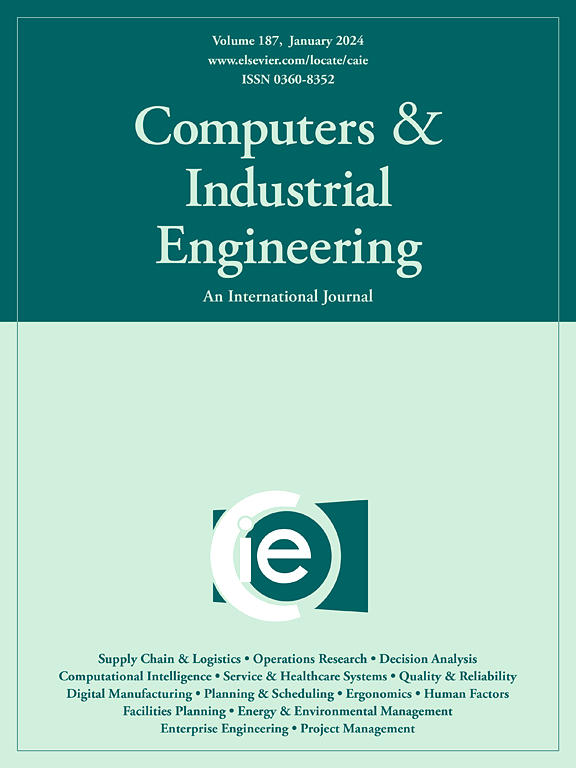示范分工生产系统中的工人轮岗
IF 6.7
1区 工程技术
Q1 COMPUTER SCIENCE, INTERDISCIPLINARY APPLICATIONS
引用次数: 0
摘要
本文提出了分工生产系统(DSPS)中岗位轮换问题的数学模型,并开发了一种有效的求解算法。dsp是迈向完全实现的血清系统的过渡阶段,增强了在多变的制造环境中的灵活性和劳动力适应性。利用非线性规划模型对作业轮岗调度中的最大流程时间进行优化。小规模的情况下,使用GAMS解决,而入侵杂草优化(IWO)元启发式处理中型和大规模的情况。结果表明,在保持求解精度的同时,IWO在计算时间上明显优于GAMS,在大多数情况下,目标值的差异在5%以下。此外,在62.5%的情况下,分配的工人数量少于为每个问题提供的初始工人数量。随机生成的测试实例验证了模型和算法,确认了它们在减少流程时间和劳动力需求方面的有效性。后优化试验表明,旋转周期的数量可以调整,以尽量减少流动时间。讨论了当优化旋转周期数以使流动时间最小化时,细胞间的不平衡也最小化。本研究填补了文献空白,为优化dsp提供了新的见解。本文章由计算机程序翻译,如有差异,请以英文原文为准。
Modeling workers rotation in divisional seru production systems
This study proposes a mathematical model for the job rotation problem in the Divisional seru Production System (DSPS) and develops an efficient solution algorithm. DSPS, a transitional phase toward a fully realized seru system, enhances flexibility and workforce adaptability in volatile manufacturing environments. A non-linear programming model optimizes maximum flow time in job rotation scheduling. Small-scale instances are solved using GAMS, while the Invasive Weed Optimization (IWO) meta-heuristic handles medium- and large-scale cases. Results show that IWO significantly outperforms GAMS in computation time while maintaining solution accuracy, with differences in objective values under 5% for most cases. Additionally, in 62.5% of cases, the number of assigned workers is fewer than the initial number of workers provided for each problem.
Randomly generated test instances validate the model and algorithm, confirming their effectiveness in reducing flow time and workforce requirements. Post-optimal trials indicate that the number of rotation periods can be adjusted to minimize the flow time. It was discussed that when the number of rotation periods is optimized to minimize the flow time, imbalances among cells are also minimized. This study fills a gap in the literature and provides new insights for optimizing DSPS.
求助全文
通过发布文献求助,成功后即可免费获取论文全文。
去求助
来源期刊

Computers & Industrial Engineering
工程技术-工程:工业
CiteScore
12.70
自引率
12.70%
发文量
794
审稿时长
10.6 months
期刊介绍:
Computers & Industrial Engineering (CAIE) is dedicated to researchers, educators, and practitioners in industrial engineering and related fields. Pioneering the integration of computers in research, education, and practice, industrial engineering has evolved to make computers and electronic communication integral to its domain. CAIE publishes original contributions focusing on the development of novel computerized methodologies to address industrial engineering problems. It also highlights the applications of these methodologies to issues within the broader industrial engineering and associated communities. The journal actively encourages submissions that push the boundaries of fundamental theories and concepts in industrial engineering techniques.
 求助内容:
求助内容: 应助结果提醒方式:
应助结果提醒方式:


